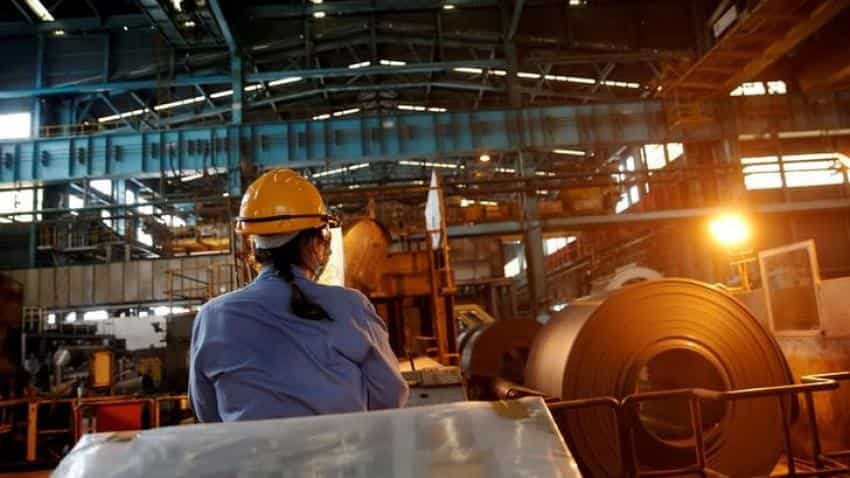China May factory activity contracts for first time in nearly a year -Caixin PMI
The findings sharply contrast with official readings on Wednesday which showed steady manufacturing growth, but the Caixin report tends to focus on smaller firms which are not believed to be benefiting as much from a construction boom as large state-owned companies and industries such as steel mills.

China`s manufacturing activity unexpectedly contracted in May for the first time in 11 months and companies shed more jobs as demand weakened and shrinking factory prices dented profits, a private survey showed on Thursday.
The Caixin/Markit Manufacturing Purchasing Managers` index (PMI) fell to 49.6, below the 50-point mark which demarcates growth and contraction on a monthly basis.
That was less than economists` forecast of 50.1 and April`s 50.3, extending a streak of declines to three months since a reading of 51.7 in February.
The findings sharply contrast with official readings on Wednesday which showed steady manufacturing growth, but the Caixin report tends to focus on smaller firms which are not believed to be benefiting as much from a construction boom as large state-owned companies and industries such as steel mills.
The divergence may suggest that much of China`s recent economic strength remains strongly dependent on heavy industry and continued government stimulus, with other sectors facing more challenging business conditions.
"China`s manufacturing sector has come under greater pressure in May and the economy is clearly on a downward trajectory," Zhengsheng Zhong, director of macroeconomic analysis at CEBM Group, said in a note accompanying the Caixin survey.
Demand faltered in May as total new orders fell to 50.3 - the lowest level in 11 months - from the previous month`s 51.0. The rate of expansion in new export orders also weakened significantly, showing only marginal growth.
Slower sales saw inventories of finished goods expand for the first time since December 2016, suggesting companies have stopped actively restocking, CEBM Group`s Zhong said.
PRESSURE FROM PRICES
Production rose at the slowest pace since June 2016, just hovering above the no-change mark.
Adding to the pressure were falling input and output prices, which fell for the first time since June and February 2016 respectively, reflecting a decline in raw material prices and casting doubts over sustained profitability down the road.
The survey showed Chinese manufacturers cut jobs at the fastest rate in eight months to reduce costs, with declines in staffing seen across all three main market groups.
Small and medium-sized firms (SMEs), forming the bulk of the country`s private investors, contribute about 60 percent of China`s industrial output and create 80 percent of China`s jobs.
To be sure, the official National Bureau of Statistics survey on Tuesday showed the PMI for small enterprises reached its highest level since February 2012 at 51.0, from 50.0 in April, but their performance still lagged that of bigger firms.
Profits for private firms rose 14.3 percent in the period of Jan-April from a year ago, compared to a 58.7 percent profit rise enjoyed by state-owned enterprises (SOEs), Saturday`s official NBS data showed.
Despite a slowing trend in growth that has worried some market observers, Chinese manufacturers were, on balance, optimistic about the 12-month outlook for production, the survey noted, although the sentiment was unchanged from April`s four-month low.
08:46 AM IST






 Coronavirus Warning! These patients are as infective as ones with COVID-19 symptoms
Coronavirus Warning! These patients are as infective as ones with COVID-19 symptoms Tech Talks on Coronavirus impact: How smartphone industry has been hit and what you should do
Tech Talks on Coronavirus impact: How smartphone industry has been hit and what you should do China using decade-old arthritis drug to treat COVID-19
China using decade-old arthritis drug to treat COVID-19 China's GDP decline at highest in 3 decades on '2020 Black Swan' event
China's GDP decline at highest in 3 decades on '2020 Black Swan' event COVID-19 to push HK bankruptcies to decade high
COVID-19 to push HK bankruptcies to decade high